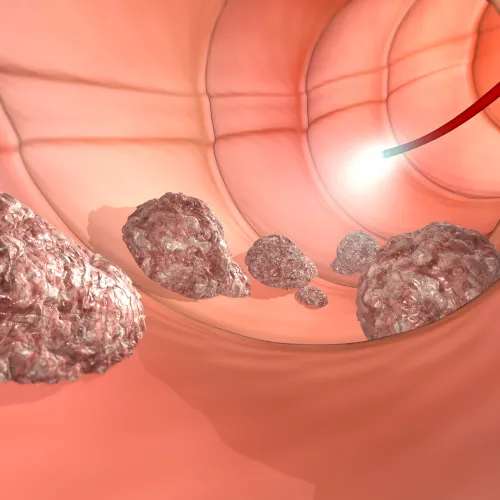Outpatient Facility Coding Alert
Master Modifier Madness to Present ASC Claims Denials

Here are the tools you need to use SG, 73, 74
If you're new to ASC coding and have previously worked in physician office settings, you've no doubt encountered some quirky modifier rules that leave you scratching your head. Read on to ace modifiers in ASC settings.
Understand How to Use Modifier SG
Prior to 2008, an ASC coder billing Medicare for any service performed in the ASC had to list modifier SG (Ambulatory surgical center [ASC] facility service) as the first modifier on the claim. Now, Medicare no longer requires modifier SG, but some private payers do. If that's the case-you can find out by checking your payer bulletins-remember to append modifier SG to every code listed on the claim, not just the first code.
Example: The surgeon performs a modified McBride bunionectomy (28292) on the left great toe and performs a hammertoe correction (28285) on the left fourth toe in the ASC.
If you are billing Medicare for these procedures, the coder should report 28285-T3 for the hammertoe correction and 28292-TA for the bunionectomy. Current Medicare ASC reimbursement is the same for both codes ($1,219.54), so they can be listed in any order on the claim. ASC reimbursement equals approximately 65 percent of the OPPS payment rate.
If you're billing a payer that requires modifier SG, you'd code 28285-SG-T3 and 28292-SG-TA. Be sure to list the code with the higher relative value first on the claim.
Remember the 'Same-Day Global' Rule
Every procedure the ASC bills has a "same-day" global period. This makes sense because the ASC is not reporting physician work-only facility fees.
For instance, if a patient experiences postoperative bleeding and the physician must return the patient to the ASC for control of bleeding on the same day, both the physician's coder and the ASC's coder should report the appropriate control-of-bleeding code appended with modifier 78 (Unplanned return to the operating/procedure room by the same physician or other qualified health care professional following initial procedure for a related procedure during the postoperative period).
Reason: The procedure occurred within the ASC's same-day global period.
If, however, the physician returned the patient to the ASC the day after the initial surgery, the ASC coder would report the appropriate control-of-bleeding code with no modifier attached. For the ASC's purposes, the initial surgery's global period has expired, even though the surgery includes a 90-day global period for physician services.
(On the other side, the orthopedic surgeon's coder would report the bleeding-control code with modifier 78 appended because the physician's services still follow the standard global rule.)
Takeaway: The ASC coder should follow the "same-day" global rule, but the physician's coder should follow standard global period rules from the fee schedule, experts say.
Ditch Modifier 50
"Don't use modifier 50 in ASC claims," Amy C. Pritchett, BSHA, CPC, CPC-I, CANPC, CASCC, CEDC, CASCC, CRC, CCS, CDMP, CMPM, ICDCT-CM, ICDCT-PCS, CMRS, C-AHI reminded coders attending the American Academy of Professional Coders' recent Healthcon. Use modifier RT or LT instead.
Handy Reference of Common ASC Modifiers
As you can see, if you've been a physician coder in the past, you can't bring in your same modifier bag of tricks into the ASC setting and expect it to work the same way. Some modifiers have the same function for both kinds of claims, and some are unique to one setting only. Below is a list of commonly-used ASC modifiers and abbreviated descriptors from a post on the AAPC blog:
- 52 Reduced services
- 59 Distinct separate procedure
- 73 Procedure discontinued after prep for surgery [and after wheeled into surgical suite/procedure room]
- 74 Procedure discontinued after anesthesia administered
- RT Right side
- LT Left side
- TC Technical component
- FB Device furnished at no cost/full credit
- FC Device furnished at partial credit
- PT Screening service converted to a diagnostic or therapeutic service
- PA Wrong body part
- PB Surgery wrong patient
- PC Wrong surgery on patient
- GW Surgery not related to hospice patient's terminal condition
To read Chidester-Palmer's post, go to: https://www.aapc.com/blog/24327-asc-coding-and-billing-know-whats-important/.
Related Articles
Outpatient Facility Coding Alert
- ICD-10 2018 Updates:
New Codes for AMIs, Intestinal Obstructions, Non-Pressure Ulcers, Spinal Stenosis, Breast Lumps & More
It's time to update your systems and templates to get ready for the new and [...] - ICD-10 2018 Updates:
Your Guide to ICD-10 Changes for Diabetes Coding
Here's how to tell when you should use codes from the Z79 series. When the [...] - Diagnosis Coding:
ICD-10's Little Words Make Big Differences
Watch out for these changes to ICD-10's general coding guidelines for FY 2018. Looking to [...] - ASC Coding:
Master Modifier Madness to Present ASC Claims Denials
Here are the tools you need to use SG, 73, 74 If you're new to [...] - You Be the Coder:
Here's When You Can Correctly Report 43277 In Addition to 43264
Question: During an ERCP procedure, the surgeon removed three stones. How should we code this case? [...] - Reader Question:
Avoid Medicare Compliance Traps When Billing for Premium IOLs
Question: Our ambulatory surgery center performs cataract procedures. Sometimes surgeons insert premium IOLs, and I've heard [...] - Reader Question:
'Limited' vs. 'Extensive' Debridement for Shoulder Arthroscopy
Question: A shoulder surgeon in my HOPD performed a labral debridement, articular shaving and chondroplasty, with [...]




